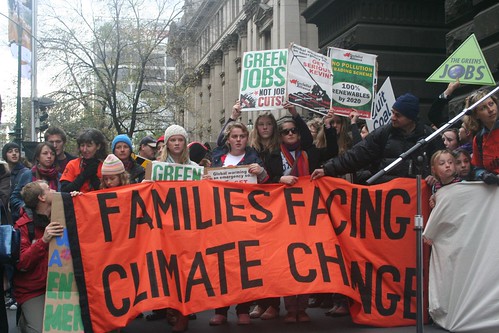
Forty years ago Earth Day was born and it validated what is perhaps the most promising social movement of the last century and arguably at least the last two centuries. Earth Day did not give rise to environmentalism as an idea but it sure helped spread the awareness and the concern that the nascent field of ecologism had fostered.
A popular movement, especially one whose concern is not limited by geography, ethnicity or religious belief does not just happen. It evolves as a result of deteriorating conditions in the status quo and it attempts to deliver a synthesis, if you will, of the conflicts that had arisen. In this case humans had been exploiting nature, abusing the natural endowment that is so critical for their survival as well as the survival of other species both in the plant and animal kingdoms. Human hubris had dictated to us, at least in the West, that we were created in the image of God, who gave us dominion over all other things on earth. These religious beliefs had become so well established that they contributed towards the creation of science, capitalism, colonialism and ecological degradation on a massive scale. Senator Nelson, the main organizer behind the first Earth Day celebration was merely attempting to provide a forum for individuals to express their concern about the direction in which the world was evolving and thus to empower people to challenge the prevailing orthodoxy that has already been challenged by Rachel Carson, Murray Bookchin, Arne Naess and others.
The world was very receptive to the idea that something radical needs to be adopted in order to meet the existential challenge that was facing all of us. Major environmental thinkers, like the ones already mentioned, to their credit saw the challenge not only in terms of open spaces, green grass, fresh water and clean air. They spoke of the need to create a just social order, a society that respects the individual rights but that is guided by the common good as well as global justice. They aimed for a world that is free of gender, religious, racial, ethnic or sexual exploitation; a non hierarchical structure. They argued and rather convincingly that we can never free nature unless we free ourselves of all the prejudices that dominate our relationships with each other.
Forty years ago a serious social movement became well established and even entrenched to save the world, to save us from ourselves and many of us responded with enthusiasm and energy. But only to be disappointed. The vision has been shattered and the accomplishments have been few.
What happened? What went wrong? The simple answer is that we have allowed the establishment, the one we were determined to fight, the order that we were supposed to challenge to co-opt us. Capitalism which was the nemesis of a healthy environment metamorphed into “green capitalism” the saviour , Incentive Based policies were adopted to restore health to an eco system devastated by the markets very own failures, affluence and affluenza are being promoted as a silver bullet for all what ails us despite the fact that over consumption is one of our seminal afflictions, complexity is still being promoted as a tool to become sustainable when the evidence is exactly the opposite and we persist in our belief that all of this was created for us, for the pleasure of the human species.
So far we have failed to address the issue of human population growth, we have made no progress in cleaning the polluted water that we have, climate change has reached a tipping point , grain stocks are the lowest they have been, conventional and non conventional energy are rapidly facing lower EROI; energy return on investment, the world is full and we are way above carrying capacity but what is most painful is that we have thus far allowed a revolution, a paradigm shift, to slip away from us for the simple fact that our concern is not genuine enough otherwise why would we have agreed to be sold for thirty of silver?
Earth Day






























